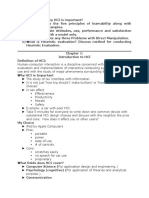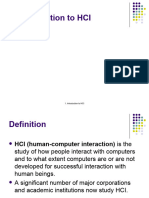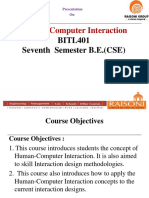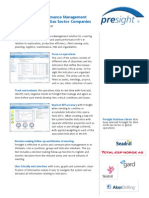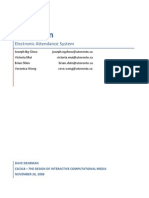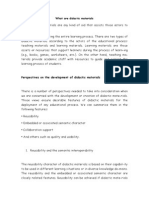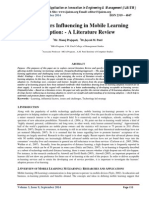0% found this document useful (0 votes)
11 views18 pagesDinesh
Human-Computer Interaction (HCI) is a discipline focused on designing, evaluating, and implementing interactive computing systems for human use, impacting effectiveness, productivity, and safety. It encompasses various fields including computer science, psychology, and design, and addresses usability, accessibility for users with disabilities, and cultural diversity. The goals of HCI include influencing research, providing tools for developers, and enhancing public understanding of technology.
Uploaded by
RajCopyright
© © All Rights Reserved
We take content rights seriously. If you suspect this is your content, claim it here.
Available Formats
Download as PPT, PDF, TXT or read online on Scribd
0% found this document useful (0 votes)
11 views18 pagesDinesh
Human-Computer Interaction (HCI) is a discipline focused on designing, evaluating, and implementing interactive computing systems for human use, impacting effectiveness, productivity, and safety. It encompasses various fields including computer science, psychology, and design, and addresses usability, accessibility for users with disabilities, and cultural diversity. The goals of HCI include influencing research, providing tools for developers, and enhancing public understanding of technology.
Uploaded by
RajCopyright
© © All Rights Reserved
We take content rights seriously. If you suspect this is your content, claim it here.
Available Formats
Download as PPT, PDF, TXT or read online on Scribd
/ 18


























